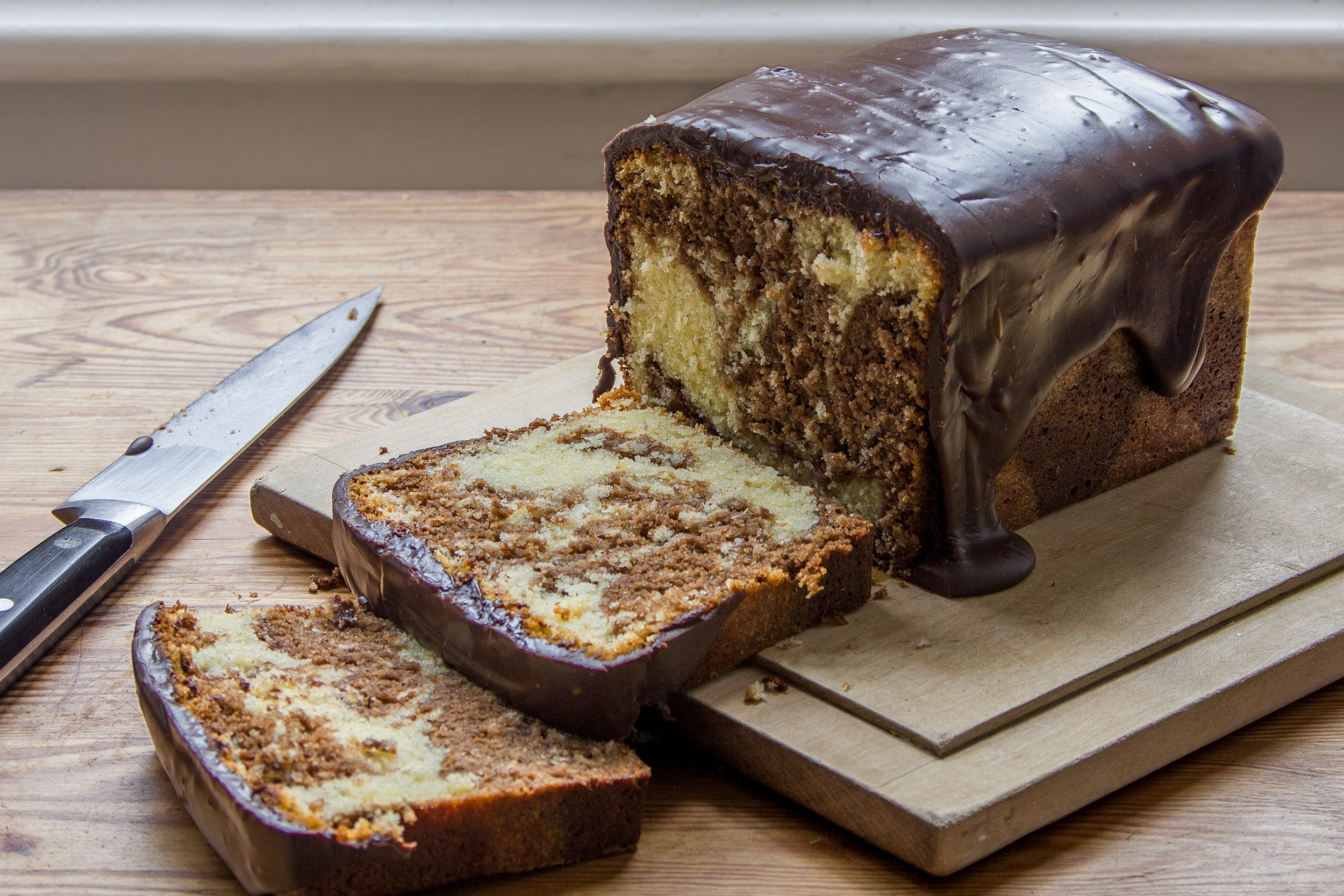Marble cake recipes involve what appears at first to be a simple technique of swirling two mixtures together in the tin. But getting those curves perfectly placed involves a little delicate intervention in the kitchen (if you want to try the technique, there’s a recipe now on the www.goodfood.com.au website.)
Surely a marble cake is a strike against good taste?
The term ‘marble’ is a bad fit. Don’t think of it as one those decorative styles that turned honest concrete into a bad imitation of finest Carrara. We’re talking gutsy swirls and twisting layers that combine flavours and textures in harmonious or shocking rhythm, depending on your mood.
Ok, we might usually want our food sombre and monastically calm. But for those anarchic moments, when you want to hijack your Madeira cake and give it striking Kuniyoshi style waves of colour and flavour then marbling is the way to go. Remember, it’s never wise to be too natural or too plain.
So I just stir everything together roughly and spoon it into the tin?
Ahhh, you wish. The beautiful curves you see in the best cakes combine planning and chance. Left to chance you might get a brilliant swirl in the middle and bleak slices at the end. Or a vague stain, where you’ve stirred too vigorously.
No, the best plan is to spoon the flavoured mixtures roughly where they need to be in the tin, each one alternating with the other mixture, then tap the tin firmly on the table to remove air bubbles. Last of all use a chopstick or a skewer to drag a few slow curvy lines through the batter to gently swirl everything together to create a delicate tumble of colour in the crumb.
Can I marble any two mixtures together then bake them?
It depends on the consistency of each and how thick you want the bands to be. Take the utterly beautiful Ottolenghi raspberry meringues. The raspberry mixture is (I think) a fresh sieved puree of berries that would be too liquid to hold in anything other than a thin drizzle. So if you drizzle a little puree on each plain meringue then lightly twirl it with a skewer, it will appear mixed through the meringue without disturbing the volume. If you try to fold the puree through the meringue while it’s in the mixing bowl you risk the mixture deflating.
For chocolate brownies, like these beauties from Bon Appétit, you can just spoon the mixtures into the tin and swirl with a skewer. Or if you want a little more control you can put the cheesecake mixture into a piping bag and squirt this in swirls directly into the brownie mixture in the tin before lightly tweaking the result with a toothpick. Sometimes this is easier and gives more definition as the mixture won’t be pulled around so much. If you want to produce a tray of these brownies for an event and they need to look the business, then this technique is handy.
What about biscuits and bread dough, spoons and piping bags won’t work will they?
Dough can be marbled but relies on kneading to create the swirls. Say you want an all butter shortbread like this delectable one from Nigel Slater, but combining pistachios with both chocolate and vanilla dough. Use the basic shortbread recipe, divide it in two, flavour and colour one half with a few tablespoons of cocoa and half the pistachios then just mix the remaining pistachios into the vanilla dough.
Divide each flavour up into 6 or 7 pieces then combine them randomly back into a ball of dough. Thwack the dough ball onto the worksurface to remove any air bubbles, then very gently knead the dough just until the colours begin to swirl. From there you can roll the dough out into a sheet or cylinder to cut biscuits from. The same method works with bread dough.
(Oh, and the title ? Well, in London, retired people can travel on the Underground free of charge after 9.30am. Those who turn up hopeful of travel before that time are known as “twirlies”.. because they’re “too early”. Now, I don’t think it’s ever too early for cake; and your marbling can look twirly, too).

